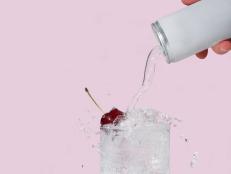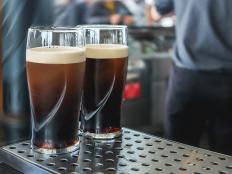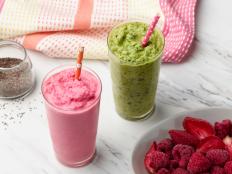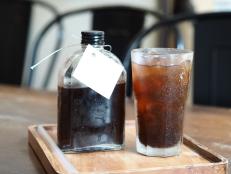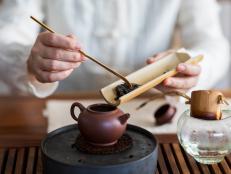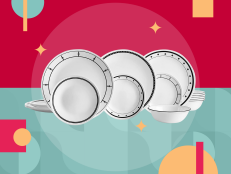What Is Kava?
Here are the basics of Fiji’s beloved national drink.

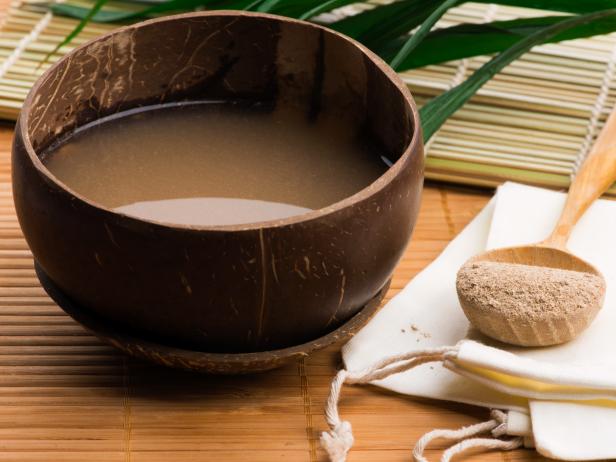
joannawnuk/Getty
Pay a visit to Fiji — the South Pacific archipelago best known for its palm tree-lined beaches, kaleidoscopic coral reefs, and legendary surf breaks — and you’re guaranteed to eat sweet, soul-warming curries, just-picked fruit and seafood so fresh it may have been swimming beside you only hours before. But many Fijians would argue that you haven’t really experienced the islands’ culture until you’ve sampled the country’s national drink: kava (or yaqona in Fijian). Made from mixing cold water with the ground-up roots of the pepper plant (piper methysticum), this non-alcoholic beverage tastes both earthy and bitter. For many, the appeal lies instead in how kava makes them feel. Thanks to chemical compounds found in the shrub, kava acts as a mild depressant, stimulates dopamine in the brain and makes the muscles in the mouth, lips and tongue go temporarily numb. After a few bowls, most people feel calmer, more relaxed and a little tingly.
Fijians have been drinking kava for centuries. Traditionally used during ceremonies to welcome guests to a village, kava is also an essential element at important life events such as weddings, births, funerals, graduations and celebrations. “Kava means gathering,” says Caroline Oakley, head chef at Kokomo Private Island Fiji. “It means community.”
During the formal ceremony, kava is mixed in a large hardwood bowl, called a tanoa. “Less water means you’ll have a strong mix and adding more water makes it a weaker mix,” says Oakley. “I prefer to strain the powder with a very good kava cloth before drinking to remove any impurities.” At the front of the tanoa, a string made of braided coconut fibers, known as a sau, gets rolled out to signify the start of the proceedings. Etiquette dictates that the honored guest sits in front of the sau and is served the first bowl of kava in a coconut shell, or bilo. When presented, the recipient must clap their hands three times, take the bilo and drink the kava in one gulp. Someone then proclaims “maca” and everybody claps their hands to signal the emptying of the bilo. Throughout the ceremony, the group observes a respectful silence, except for the leader, or Matanivanua, who directs the action.

Michele Westmorland/Getty
While this long-standing custom exists widely across the country, it’s becoming common to see Fijians indulge casually. “The older generations tend to drink kava with more ceremony, whereas some teenagers and young adults use it as a form of social drink every day of the week,” says Sireli Cakobau, concierge at Matangi Private Island Resort. Kava has also become increasingly popular with tourists. “Guests who travel to our shores have seen or heard about it on social media, which makes people want to try it,” says Oakley. “As hospitality workers, we are happy to share that experience with them.”
In addition to cultural shows and village visits, some Fijian resorts and restaurants are beginning to experiment with kava as an unexpected ingredient in ice cream, sauces and other recipes. At Nanuku Auberge Resort, the bar’s mixologist created a playful infusion of kava blended with vodka, anisette and clove. And, for those looking to bring a bit of Fiji home, shops such as Jack’s of Fiji now sell pouches of locally made, instant kava that make a unique souvenir to share with friends back home.
Yet, at its root, kava is so much more than a novelty. It’s a serious culinary product with complex flavors. “Just like wine, kava is different in terms of strength and profile based on where it is grown in Fiji,” says Oakley. (You’ll find the strongest varieties farmed on the beautiful islands of Kadavu, the north part of Taveuni Island, and Qamea Island.) More importantly, it stands for a nation’s rich heritage and deep commitment to keep their traditions alive. “Yaqona is a Fijian link to the past,” says Cakobau. “It’s so inextricably woven into the cultural fabric, that life without it is unimaginable.”
Related Content:






















